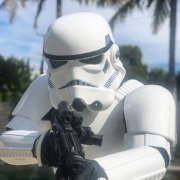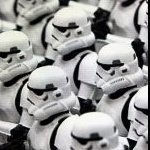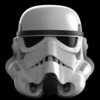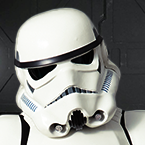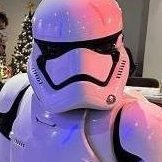-
Posts
138 -
Joined
-
Last visited
-
Days Won
1
About OddViking327

Member Title
-
Position
Centurion
FISD Info
-
Centurion Granted Date
20201202
-
EIB Awards
1
-
EIB Cohorts
ANH-S
Standard Info
-
Name
Colin
-
501st ID
25622
-
501st Unit
Golden Gate Garrison
Recent Profile Visitors
The recent visitors block is disabled and is not being shown to other users.
-
Donated!
-
TK 26476 - Marz Elson started following OddViking327
-
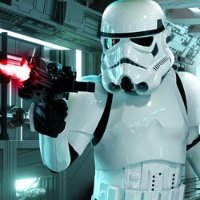
A sad day for FISD - Dan Branton
OddViking327 replied to themaninthesuitcase's topic in Announcements
What a sad thing to find today. He was really helpful to everyone, and had such a passion for the details of this costume. Rest in peace, Daniel. -
OddViking327 started following Modifying a Black Series helmet for accuracy
-

Modifying a Black Series helmet for accuracy
OddViking327 replied to OddViking327's topic in Rogue One Build Threads
Okay, I added them to the repository! -

Modifying a Black Series helmet for accuracy
OddViking327 replied to OddViking327's topic in Rogue One Build Threads
No, I already have my ANH TK, and that is what I troop in. This was just a way to make my second yellowing Black Series helmet into something more accurate, and now it is back on display. I loved the challenge, and also have a new-found love for the ROTK details in the helmet. That Vocoder and the tube vents, along with my discovery of the actual vents in the tears and traps, have made me love it all the more. -

Modifying a Black Series helmet for accuracy
OddViking327 replied to OddViking327's topic in Rogue One Build Threads
Finished! It was difficult to figure out this weathering technique, but it worked in the end. I wanted to replicate the weathering of the troopers in the Kenobi show on Mapuzo, the ones in that truck/transport scene on the mining planet. They had this great dusty-wiped-clean-to-white look. Some were more heavily dusted, and others less (see reference pics). The trick would be to make a permanent paint look. I had some detailed close up pics from a stunt performer on the show, who said I can identify him here on these forums: fellow 501st Legion member Ardeshir Radpour @equuspolo (again, sorry but they are not able to be shared here). The photos showed some of the “dust” effect was beading up, like acrylic from an airbrush would on glossy paint. After a test, my hunch was right. I used some Vallejo acrylic airbrush paint (black and US earth brown), diluted with some Liquitex acrylic airbrush medium. Sprayed from a distance, at 10 PSI, this got the faint dusty look. I tried quickly wiping it with a soft rag with alcohol, but that smeared it. I had to remove a lot of that first coat with rubbing alcohol, which left a patchy residue (but that added to the overall grime texture). Next I tried the same mist. Let it dry a few minutes. This time used water and a coarser rag (a piece of khaki twill pants), and wet the area and scrubbed the acrylic paint off. Acrylic, though dry in a few minutes, on a glossy surface is still sort of removable with water and light scrubbing for a few hours. Using my fingernail behind the wet fabric I could make a line or scrape area. Bit by bit, I hit the high points and any other areas, removing brown. This technique was not easy, a little frustrating, because if you scrub too hard, you remove it all in a patchy way, but you want to just get some of it. It is a fine balance. Finally, some brushed on acrylic black marks on high points here and there like it looks on the references, and a few patches, which is done much like movie clone armor has. To weather the black parts, I used some grey Fuller’s earth dust on the corners of the lenses, in the cracks on the vocoder, and hovi tips to give those black areas some dust in the recesses. Wiped it off with a rag, and because these are going to be hard to contact, they are not permanently bound to the surface (they should just stay like real dust would). Finished! Here are the results, shot in sunlight to compare to the sun-lit scenes on Mapuzo: -

Modifying a Black Series helmet for accuracy
OddViking327 replied to OddViking327's topic in Rogue One Build Threads
This helmet is nearing completion! I kept the helmet in three pieces for as long as possible, to make installing the elements easier. I installed my Vocoder tubes I built in a previous post. I had to trim down the smaller rods to only about 1cm long after the bend (or else the bottom of the rod showed as a slight kink), and discovered that I could bend it at the full 90° and use some graphite powder squirted into the tube to help get the tube slid over the bend. No need to hammer them in the tube, which ruined the tube a few times. Once these were inserted and carefully aligned, I glued them in place with CA glue, and then trimmed them. I carefully put a tiny bit of CA glue behind the three longer tubes to fuse them to each other to make them one stronger unit like the originals are. I installed frown screen and used blue self adhesive craft foam for the blue tube stripe vents (and added CA glue to ensure they stayed). The green lenses in the original helmet are way too transparent, so I cut some Hobart welding shield pieces to add behind, glued them at the edges with CA glue and accelerant (careful with CA glue and transparent pieces, it will fog them in a permanent way, so accelerant can speed up the cure and avoid it), and installed the lens piece. The brow strip was from Trooper Bay (exact right length, with just a little stretch to get it the last few mm to the end). Because the brow was lowered, a thin strip of white was visible. I taped off and airbrushed that top edge black. The brow was glued on with E6000, with a dot of CA glue on the ends to help keep it in place while that cured. Face finished, I glued the helmet back together. I had removed most of the internal liner pieces, keeping only the top ring ledge that screwed into the top, and cut it in places to allow the vent backer plates to fit. I added some overlapping seam strips to help secure it those butted joints in places (not pictured). I glued in my black backer plates (some have the mesh, and are more like frames). There were two light-leak gaps at the top traps, so I fabricated a fitted piece of plastic to glue in as a backer (I had thrown out the original inside plate, a perfect piece probably could have been cut from that). Lower black gasket: I tried a pressure cooker gasket that someone recommended, but at least on the one I ordered from Amazon, the edges curled away from the edge rather than toward it. It was just looking like it would catch on everything, and I would also have to glue it somehow. I remembered I had some black truck edge trim from another project, which was self gluing, and it looked perfect. I had just enough, with just a few centimeters cut off at the end. Once this is on, the helmet lower edge also feels much more sturdy. I glued in the grey vent pieces, carefully aligning them before spritzing with my CA glue accelerant. This helmet now has airflow through the vents! I discarded the old inaccurate Hovi tips, and ordered New Hovi tips from Trooper Bay. Compare the new to the old, as well as the updated vocoder piece: Here you can see my standard Black Series helmet, and the updated one. I put a light inside, showing the newly tinted lenses, and also how the old one sort of glowed compared to the painted one. Here you can see the extended "jaw" line: Final step is weathering to match the Kenobi troopers. I did a test this morning with some airbrush paint, rubbed off with an alcohol rag. I have some very close up images from my contact (apologies, I was asked not to share), which show a mix of fine airbrush color, and some spattered droplets like happen when liquid paint is on gloss, so I will be replicating that. These helmets also have what look like a few dark dry brush marks in spots like Movie Clone Trooper armor has. I was glad to learn a few things on these test pieces, so I can try and do it all in one go on the helmet. Nearly done!! -

Modifying a Black Series helmet for accuracy
OddViking327 replied to OddViking327's topic in Rogue One Build Threads
Continued: I had seen someone posting a FB build group this photo, wondering about why you can maybe see some light coming through the tear/cheek vents in this behind the scenes photo: I guessed that they were likely some kind of mesh fabric. I asked my contact who has intimate knowledge of the helmets, and they confirmed my suspicion. While I cannot share the photos or reveal my source [my source has said I can identify him here on these forums: fellow 501st Legion member Ardeshir Radpour @equuspolo ], they showed me detailed pictures of the inside, including the black breathable fabric that is glued behind these vents (and they are also behind the top vents, but were covered with helmet padding which blocked airflow in this helmet). They also showed me more details of the grey helmet details which confirmed they appear to be a separate piece. So I cut some "frames" to give my inserts something to hold on to, and then used CA glue to attach some mesh fabric (from one of my wife's socks) stretched taught behind it. (According to my source, what my black frames are doing in this build was instead integral to the helmet as a recessed ledge, and painted black, and then the mesh fabric was simply glued to the inside of the helmet over the hole, but the result is the same and looks identical): I cut the backer plates for the other vents and traps as well: Meanwhile, I did a final wet sand at 600 grit to the repairs, and painted the frown teeth and attached ear button with primer grey, and taped them off. I primed the whole helmet with white primer, and then gloss white the next day. I had a few minor rough spots, and sanded those in preparation for a gloss coat. It appears some of my paint, despite warm dry days, did not fully cure. According to Rustoleum, it should have at least 48 hours (not 20) before applying a gloss coat, and it instantly crazed up. Back to sanding... Vocoder tubes: I needed the vocoder to make a harder angle right out of the top holes, without kinking, and I had an idea to insert a piece of rod with a right angle bent into it. It looked like it would work, but the lower end of the rod (2.25" for the long ones) showed a bulge where it ended, so I would need to curve it back and grind it away so there is no hard corner at the end of the rod. The irrigation line can't easily make the 90 degree bend [UPDATE: it was hard to get the irrigation line to make the 90 degree bend, but I used a simple graphite bottle to squirt some graphite down the tube, lubricating the rod so that it more easily could make the bend, eliminating the hammer part which mashed up the tubes. Graphite bottles can be found at any hardware store, and are used to lubricate old locks and things], so I hammer the bend, and then hammer it back to 45 (bent to 90 first to sort of weaken it, making the second time easier), insert the rods over the tubes, and then re-hammer the 90 degree bend. It chews up the end of the tube a little, so this has to be done with the least amount of hammering (thus the pre-weakening of the bend). Using the graphite makes the second hammering not necessary. It might work with lubricating oil too, but that oil may make gluing it more difficult. After waiting two full days, wet sanding with 600 grit and then 1,000 grit, my helmet was ready for painting... again. I warmed my paint in the sun, shook it for over 5 minutes, set up the parts in the shade but on a warm dry morning, and tried again. Success! No need for a gloss clear coat, this white is glossy enough: Next steps over the next few days are assembly... -

Modifying a Black Series helmet for accuracy
OddViking327 replied to OddViking327's topic in Rogue One Build Threads
more work on my Black Series Stormtrooper helmet accuracy modifications: Looking at the close up photos of the Rogue One style helmets (the modern Stormtrooper suits used in The Mandalorian, Kenobi, any current shows), the gray traps and vents all appear to be a separate piece of grey, placed into a cutout in the helmet, with a black backer. [UPDATE: I was able to verify from someone who has had personal knowledge of these helmet props that not only are the grey pieces seperate, with a recessed area rather than a painted border, the vent ones actually go through the helmet and are backed with black mesh fabric, to allow for air flow. I have seen photos, but am unable to publicly share that reference]. The Black Series helmet is more like the original trilogy helmets, painted with a black border (and some slight texture). I searched for a file for these, but I couldn’t find those pieces alone. So I built them! Took photos of the Black Series helmet vents, and then made those precise shapes in vector. I imported those into Blender and scaled them to the exact size, and then extruded them. I added them to Thingiverse for the next builder doing this. Thingiverse stl files for the vents and traps Printed in resin, and then I cut out the helmet vents (cutting just inside the grey with a Dremel, to leave room to file out the final precise shape). I used those cutouts as shape bucks, and slowly heated each vent with a heat gun, and held them to the curve so they would fit. The cheek vents have almost a propeller twist, so keeping by those cutouts as a guide was vital. I slowly filed the cutouts until they just fit the new pieces [UPDATE: Based on some new reference, I plan to sand my grey inserts a bit more so that there is a bit more of a gap between them and the helmet) I also cut out the tube vents like the modern helmets have: I also "lowered" the brow base by adding to the bottom with Magic Sculpt. I did a few more filling and sanding passes on the back battery cover, which took five total treatments to eliminate those lines. Finally, for the Vocoder, I found what I thought was some ideal material, satellite cable, but my satellite cable was 1/32” too wide, when I added it up, 7 of them side by side would be about 1/4” too wide overall. Luckily I had some 1/4” irrigation tubing, which appears to be a perfect match to the screen used props. Next up: Adding some steel rod inside the vocoder tubes to help make that sharp curve at the top (without kinking), priming and painting the helmet, fabric covered backer plates for the grey plates. -
Hello there! I am modifying a Black Series “Rogue One style” Stormtrooper helmet to make it more like the screen props. This originally was a few Instagram Build posts, but posting here because the FISD is a better place for tutorials, as well as expert feedback. I have two of these helmets, but I had let this one sun-yellow (and treated it back to white a few times with the Trooper Bay peroxide treatment) and was ready to just paint it gloss white, but since I was already going to paint it… why not do all of the work to move it from a toy to a replica prop? When it’s complete, I plan to paint it and weather it like the troopers on the truck in Kenobi, I love that dusty grey weathering look! There are a few threads on the modifications you have to do, involving: filling in the speaker and battery case lines, replacing the Vocoder with actual solid tubes (with a gap behind), extending the lower “jaw” edge, lowering the brow, darkening the lenses, replacing the Hovi tips and rubber gaskets, and a few other minor adjustments. I ended up doing a few more as I went. But here are some of the things I planned to change: Reference: I took it all apart, removing all electronics (the “voice changer” feature on this helmet is renowned for how useless it is), remove all of the inner walls and screw posts, and separate it into the three parts to work on it. I removed the rubber edge "gaskets" and the rubber Vocoder, and cut out the Vocoder spot. In the vocoder place and along the lower front "jaw" area, I made a Sintra “backer plate” to help the other plates have something to glue to. Patterning was tricky, involving several cardboard mock-ups to get the shapes, and some heat forming to get the plastic to all fit in place, but it worked out. Filled initially with Plastic Weld epoxy putty, then sanded, Bondo Glazing and Spot Putty, and sanding again. There is more filling and sanding to get this flush. There are some minor seam lines I also sanded and filled, and I added the base for the “eye bump” that the modern helmets have as a nod to the more pronounced one on the Original Trilogy helmets. I will sand it down a little more to keep it subtle. Continued below...
-
The 501st group pic says "you don't have permission" when I click the link. It may be posted in an area only for certain staff to view. The FISD photo opens fine.
-
Does anyone have our official detachment photo? I was in it, and would love to see it.
-
Mlederer started following OddViking327
-

revlimiter's Armor Bin Build
OddViking327 replied to revlimiter's topic in Boots, Soft Parts, and other Accessories
What an awesome bin! You did some great work there, and I am honored that I inspired this. Great work on the vents, the stickers, the wheel covers... it is all so amazing. Well done! -

Imperial Arms 3D E-11 (version 3) kit
OddViking327 replied to OddViking327's topic in ANH BlasTech E11
UPDATE May 2021: Imperial Arms 3D just released their V4 blaster today, which, based on this feedback on my build, has addressed all of the placement and accuracy issues (keyhole, knurled sights, some missing screw spots, and most notably, the scope and hengstler counter locations). Imperial Arms V4 E-11 blaster The only thing people might consider modding is to make an aluminum rail like I did, but his kit is now much easier to build "off the rack" now. Just be sure to do the work, and finish those print lines! -
@justjoseph63 Thanks, the one behind the lug is easy enough, and the scope one does look fairly consistent, but do you have a photo of the square detail with more of the blaster showing? I am not certain where that is on the blaster, or which side, or which way is toward the barrel?
-

Stormtroopers in a ship corridor (photo edit)
OddViking327 replied to OddViking327's topic in Off Topic
Behind the scenes shot. Corridor is a 3D image purchased from Shutterstock. The key is finding a background with similar lighting, at the exact same angle for the perspective to work (and having the trooper move in the physical space, so the feet are all at the right angles on the floor):


